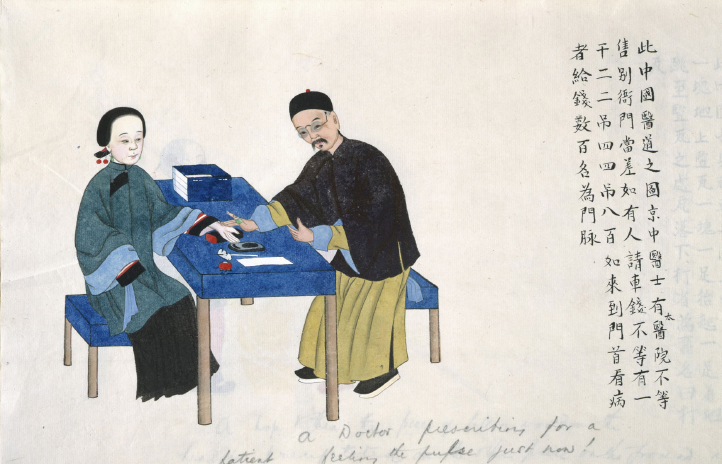Document 21.1: A Chinese Physician Takes a Patient’s Pulse, ca. 1800
For Chinese physicians, diagnosis began with a detailed exploration of the patient’s medical history, symptoms, and current condition. A key component of this diagnostic process was the taking of the patient’s pulse or, more accurately, the patient’s pulses, since Chinese physicians believed that taking the pulse at various positions offered clues to the condition of different organs and bodily systems. A pulse that was too strong or too weak, to slow or too rapid, suggested a specific type of imbalance in the relevant body system. Thus, the pulse served as the foundation for the eventual diagnosis and recommended course of treatment. As you examine this illustration of a physician taking a patient’s pulse, pay attention to the details the artist included in the image. What objects are on the physician’s table? What do they suggest about the physician and his methods?

Questions to Consider
- How would you characterize the physician and his patient? How would you characterize their relationship?
- Why do contemporary Western physicians take their patients’ pulse? What similarities and differences do you see in the use of the pulse in contemporary Western and traditional Chinese medicine?